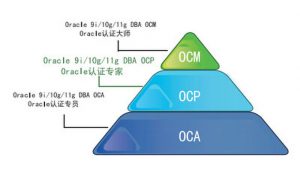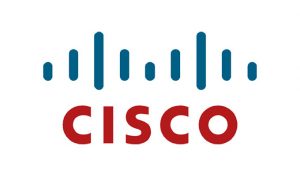HCIE认证定位于大中型复杂网络的构建、优化和管理。其认证包括但不限于:不同网络和各种路由器交换机之间的互联,复杂连接问题的解决,使用技术解决方案提高带宽、缩短相应时间、最大限度地提高性能、加强安全性和支持全球应用,复杂网络的故障排除。 通过HCIE认证,将证明您对大中型复杂网络有全面深入的了解,掌握大中型复杂网络的技术,并具备独立设计各种复杂网络以及使用华为路由交换设备实施设计的能力。
拥有通过HCIE认证的工程师,意味着企业有能力独立搭建完整的大中型复杂网络,能够提供完整的故障排除能力,能根据企业和网络技术的发展规划企业网络的发展,并提供高安全性、可用性和可靠性。
HCIE考试内容
| 考试代码 | 考试名称 | 考试时间 | 考试费用 |
| H12-261 | HCIE-R&S (Written) | 90min | 300美元 |
| N/A | HCIE-R&S (Lab) | 480min | 1200美元 |
| N/A | HCIE-R&S (Interview) | 60min | 120美元 |
HCIE课程大纲
| 章节目录 | 课程目录 | |
| 第一章 Layer 2 Technologies | · 1.1 STP · – STP · – RSTP · – MSTP · – Loop guard · – Root guard · – BPDU guard · – TC-BPDU attack guard · 1.2 VLAN and GVRP · – Access port · – Trunk port · – Hybrid port · – QinQ · – Vlan Aggregation · – Mux Vlan · – Voice vlan · – GARP · – GVRP · 1.3 Transparent bridge · – Local Bridging · – Remote Bridging · – Integrated Bridging and Routing · – VLAN ID Transparent Transmission | · 1.4 Link Aggregation, Eth-Trunk and IP-Trunk, Load-balance, LACP · – Link Aggregation · – LACP · 1.5 Ethernet technologies · – Speed and duplex · – Ethernet, Fast Ethernet, and Gigabit Ethernet · – Auto MDI/MDIX · – Auto negotiation · – Storm control · – Unicast flooding control · 1.6 HVRP · 1.7 Smart link · 1.8 DLDP · 1.9 Switched Port Analyzer (port-mirroring) · 1.10 Frame Relay · – LMI · – Traffic shaping · – Full mesh · – Hub and spoke · – DE · 1.11 HDLC and PPP · 1.12 PPPoE and PPPoA |
| 第二章 IPv4 | · 2.1 IPv4 addressing, subnetting, and VLSM · 2.2 IPv4 tunneling and GRE · 2.3 IPv4 RIP version 1/2 · 2.4 IPv4 OSPF · – Standard OSPF areas · – Stub area · – Totally stubby area · – NSSA · – Totally NSSA · – LSA types · – Adjacency on a point-to-point and on a multi-access network · – Virtual-Link · – LSA Filter · – OSPF graceful restart · – Stub Router · – OSPF Authentication · 2.5 IPv4 IS-IS · – NSAP · – IS-IS Link-state packets · – IS-IS area type · – IS-IS circuit type · – IS-IS TLV · – IS-IS DIS and Pseudo node · – IS-IS SPF · – IS-IS LSP · – IS-IS Metric | · – IS-IS Route Leaking · – IS-IS RPC · – IS-IS Graceful Restart · – IS-IS LDP Synchronization · – IS-IS Authentication · 2.6 IPv4 BGP · – IBGP and EBGP · – BGP attributes · – BGP synchronization · – BGP routes Summarization · – Route Dampening · – BGP route reflector · – BGP confederation · – BGP Community · – BGP Peer Groups · – BGP Graceful Restart · – BGP Security · – Principles of Route Selection · 2.7 Route Control · – Filtering · – IP Prefix list · – Route Import(redistribution) · – Route policy · – Summarization · – Preference · – Other advanced features |
| 第三章 IPv6 | · 3.1 IP version 6 addressing and different addressing types · 3.2 IPv6 neighbor discovery · 3.3 IPv6 functionality protocols · 3.4 Tunneling techniques | · 3.5 RIPng · 3.6 OSPF version 3 · 3.7 MP BGP · 3.8 Route Control |
| 第四章 MPLS VPN | · 4.1 MPLS · – MPLS network component (P, PE, CE) · – MPLS label format · – MPLS label encapsulation · – MPLS label stack · – MPLS label operation · – Forwarding Equivalence Class · – LDP · – Label advisement model · – MPLS LDP—Local Label Allocation Filtering · – MPLS LDP Inbound/outbound Label Binding Filtering · 4.2 MPLS Layer 3 VPN | · – MP-IBGP VPNv4 peering · – VPN-instance · – Route Distinguisher · – Route Target · – Route Target import/export · – PE-CE–Dynamic Routes · – PE-CE–Static Routes · – Redistributing PE-CE routes into VPNv4 · – Redistributing VPN4 routes into PE-CE routing table · – MPLS VPN Multicast · – MCE |
| 第五章 IP Multicast | · 5.1 Multicast distribution tree · 5.2 Multicast forwarding · 5.3 Multicast RPF · 5.4 Multicast Administrative Boundaries · 5.5 PIM dense mode · 5.6 PIM sparse mode · 5.7 IGMP | · 5.8 IGMP Snooping · 5.9 MSDP · 5.10 Inter domain multicast routing · 5.11 PIM RP, and BSR · 5.12 Multicast tools, features, and source-specific multicast |
| 第六章 Network Security | · 6.1 Access lists · 6.2 uRPF · 6.3 IP Source Guard · 6.4 AAA · 6.5 802.1x / NAC · 6.6 NAT · – Static NAT/NAPT · – Dynamic NAT/PAT · – Easy IP · – NAT Server · – Twice NAT | · – ALG · – NAT Mapping · – NAT Filtering · 6.7 Device access control · 6.8 Security features · 6.9 Traffic Suppression · 6.10 Local Attack Defense · 6.11 IP Address Anti-spoofing · 6.12 ARP Security · 6.13 DHCP Security |
| 第七章 QoS | · 7.1 QoS · – PQ、DRR、PQ+DRR、WRR、PQ+WRR、WFQ and PQ+WFQ · – Classification · – Traffic Policing · – Traffic Shaping · – Marking · – WRED and RED | · – Compression · – HQoS · – Class-based QoS · 7.2 Fragmentation for Frame Relay · 7.3 CBS、CIR、TC、BC for Frame Relay · 7.4 Generic traffic shaping · 7.5 RSVP |
| 第八章 Troubleshoot a Network | · 8.1 Troubleshoot complex Layer 2 network issues · 8.2 Troubleshoot complex Layer 3 network issues · 8.3 Troubleshoot a network in response to application problems | · 8.4 Troubleshoot network services · 8.5 Troubleshoot network security |
| 第九章 Network Management | · 9.1 Syslog · 9.2 IP Service Level Agreement SLA · 9.3 NetStream · 9.4 NQA | · 9.5 SNMP · 9.6 FTP · 9.7 Telnet · 9.8 SSH |
| 第十章 Feature | · 10.1 VRRP · 10.2 VGMP · 10.3 Interface Backup · 10.4 NTP · 10.5 DHCP · 10.6 BFD | · 3.3MSTP原理与配置 |
| H12-222 网络接入技术 | · 4.1802.1X认证接入技术及其原理 · 4.2DHCP原理及其交换机扩展特性DHCP Snooping | · 4.3RRPP的原理及其业务特性配置 |
| H12-222 MPLS VPN | · 5.1MPLS原理与实现 · – MPLS帧格式封装 · – MPLS数据转发流程 · – LDP邻居发现和会话建立 · – LDP标签管理 · – MPLS环路避免 | · 5.2MPLS VPN基本原理与实现 · – 单域MPLS VPN原理与实现 · – OSPF在MPLS VPN中的应用 · 5.3MPLS VPN故障诊断 · – 控制平面故障处理思路和调试方法 · – 数据平面故障处理思路和调试方法 |
| H12-222 华为以太网交换机 | · 6.1华为交换机硬件结构,工作原理 | · 6.2华为交换机VRP软件特性 |
| H12-223 网络安全 | · 1.1网络安全基本概念,防火墙基本功能原理 · 1.2防火墙NAT技术,攻击防范技术 | · 1.3防火墙双机热备技术 · 1.4华为Eduemon防火墙产品介绍和组网运用 |
| H12-223 HA高可靠性 | · 2.1BFD(Bidirectional Forwarding Detection)原理 · 2.2IP Reroute、IP FRR、LDP FRR、VPN FRR、TE FRR基本原理 | · 2.3RPR基本原理 · 2.4NSF、 MPLS OAM原理与组网应用 |
| H12-223 Qos | · 3.1IP Qos模型,区分服务模型 · 3.2基本原理 · – 分类和标记 · – 监管和整形 | · – 拥塞管理 · – 拥塞避免 · – 链路效率机制 · 3.3基于类的Qos基本原理 |







